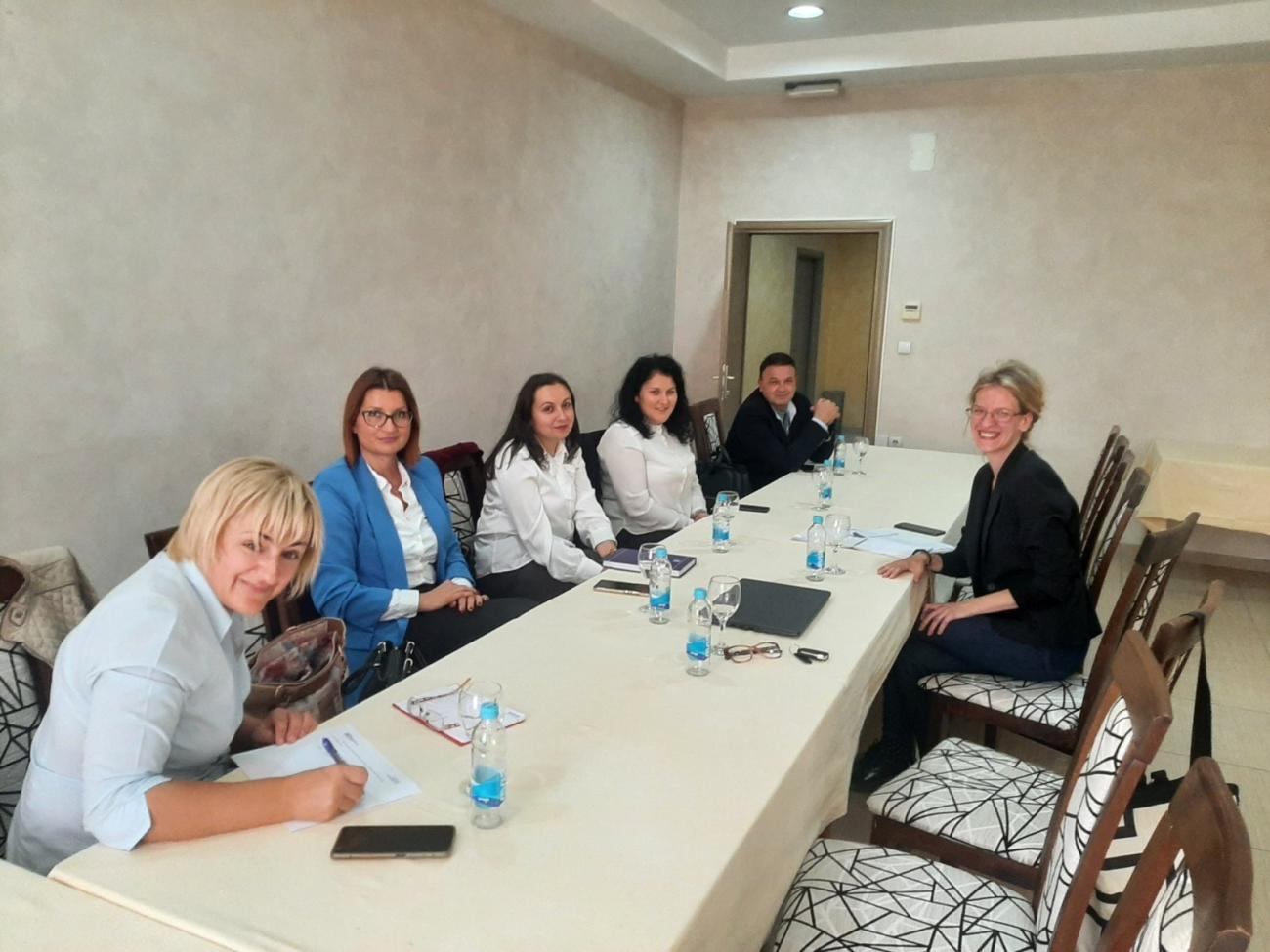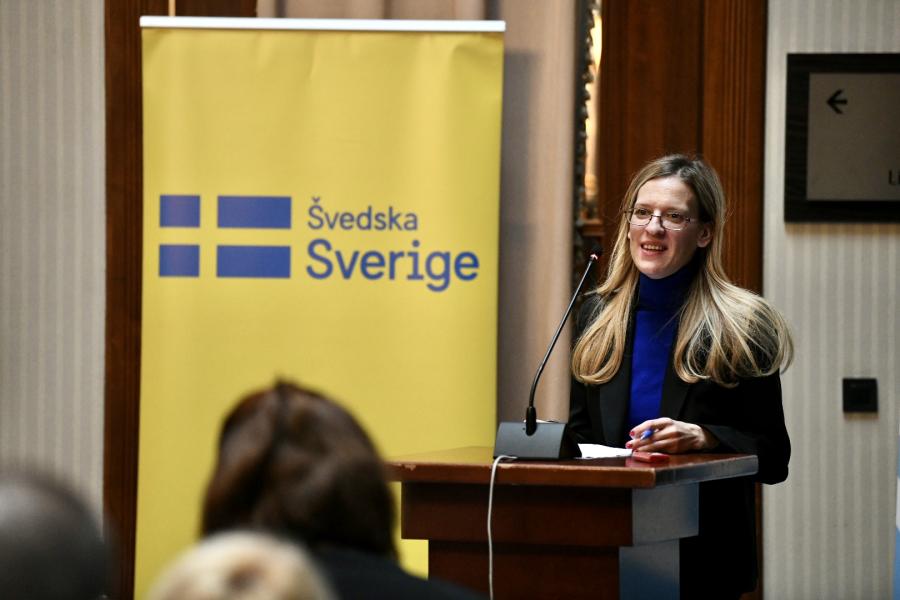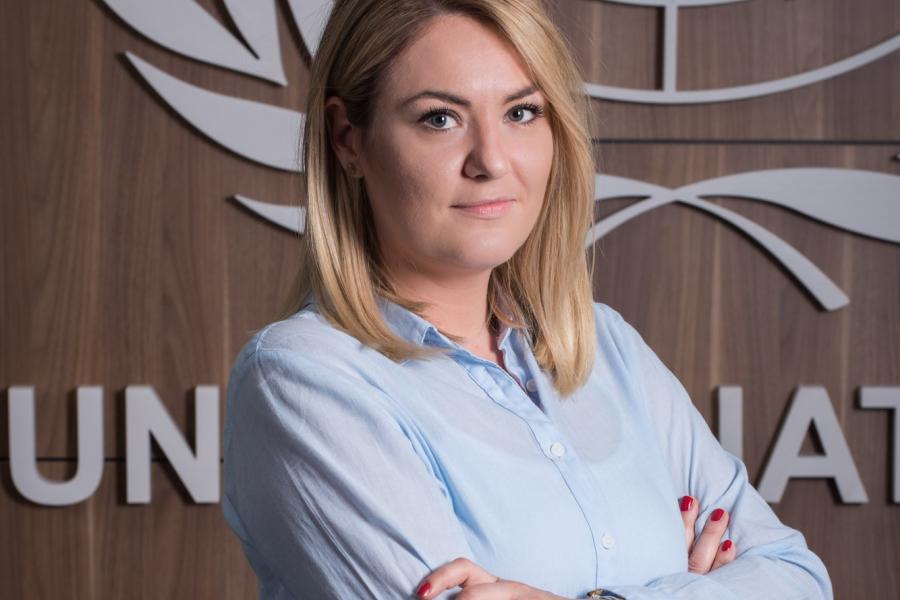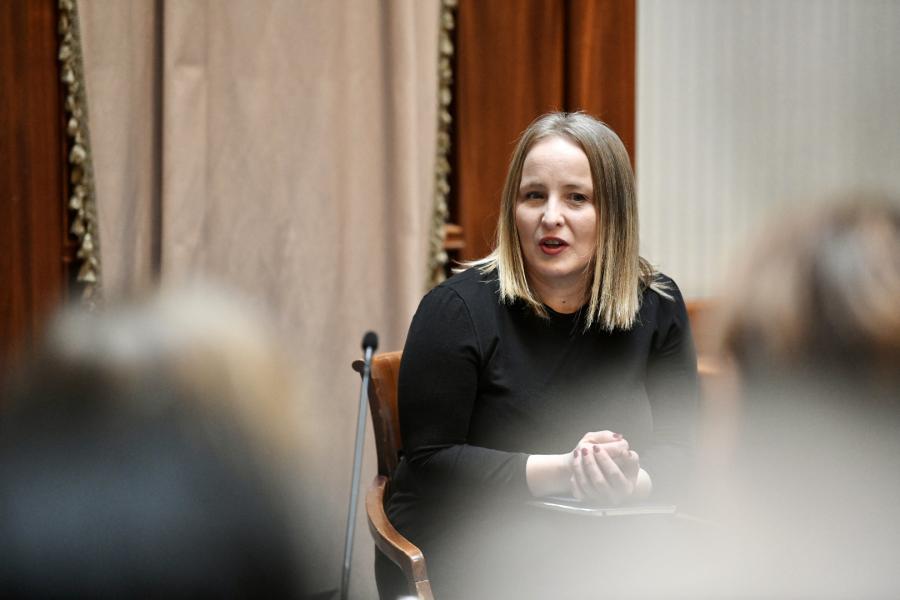Bosnia and Herzegovina: Journalists are crucial in combating violence against women

Working with the media to prevent violence against women has been an important part of UN Women's work in Bosnia and Herzegovina (BiH).
Undoubtedly, a lot remains to be done to eradicate problematic and sensationalist reporting on gender-based violence. However, after six years of working with journalists with the support of the government of Sweden, there is a positive change in newsrooms and an increase in the quality of media reporting.
Since 2016 to date, around 330 journalists and over 80 students of journalism from six BiH universities have taken part in education programs on professional reporting on violence against women, implemented by non-governmental organizations with the support of UN Women BiH and Sweden. Today, some of these participants are among the leading journalists covering this topic in BiH. They continue to share their knowledge with fellow journalists through new programs.
One of them is Katarina Panić, a journalist from Prijedor. She took a step further and became a permanent member of the multisectoral team for the prevention of domestic and gender-based violence. Panić and other members of the team, including representatives of health, social, educational and police institutions from Prijedor, meet once a month. Her role is to bring the work of these institutions closer to the general public and inform citizens about the trends and statistics regarding domestic violence in Prijedor. She regularly writes for a news agency, and her articles are re-publicized by other media. These articles often inspire other journalists to conduct an in-depth analysis of some of these topics.
“Institutions for the protection of survivors are really doing tremendous work, which was completely invisible for ten years,” says Katarina. She explains that it took six months for her to earn the trust of other team members. The situation is considerably different today because everyone recognises the benefits of this cooperation. “They understand that we can all be of use to each other. They are my sources, and I am there to make them more visible.”
Citizens of Prijedor have different types of prejudice about different institutions. Thus, they associate the police with the use of force, the social work centre with taking children from their parents, and the role of schools is seen only as educational, says Dragana Grujičić, a social worker at the Prijedor Center for Social Work. “These are the most frequent types of prejudice that citizens have about our respective institutions which are involved in response to domestic violence. However, when the media report on an issue every month, we see the public opinion change in the comments – they then condemn violence too.”
“We would have been invisible, had it not been for Katarina”, says Grujičić. She adds that the awareness of institutions that they are exposed to public scrutiny motivates them to do better.
Solid foundations are there, but much remains to be done.
Prijedor is one of the 18 municipalities in BiH where UN Women has been working together with Mediacentar Sarajevo since 2020 to strengthen cooperation between the local media and different institutions for the prevention of and protection from domestic violence. This is a long process with varying success across all local communities. However, it is extremely important because unsensitized media further contribute to the patriarchal mindset and attitudes that violence is a private matter, explains Selma Zulić Šiljak, Mediacentar’s project coordinator.
“Working on prevention and changing public perception and attitudes towards violence require continuity. This cannot be simply a one-off intervention. UN Women has recognized this, and we are grateful to be continuing the cooperation third year in a row. We are expanding the opportunities for media contribution to the process.”

With the aim to continuously follow the trends in reporting on gender-based violence, UN Women conducts regular analyses of media reporting, which are one of the most significant indicators in the field. Change is slow, however, the findings of the analyses indicate progress.
“Comparing the first analysis from 2016 to the most recent one from 2020, there is obvious progress in certain aspects of media coverage of gender-based violence. Unfortunately, sensationalism is still present, however, the most recent analysis did not detect a single case of publishing graphically explicit scenes of violence,” says Nađa Hasanović, project coordinator within UN Women’s program on prevention of violence against women.
Speaking about the important activities aiming to empower the media community, she emphasizes the development of the Handbook on Gender Responsive Reporting, which remains a permanent resource in newsrooms; active engagement of journalists in awareness-raising campaigns on violence against women; and cooperation with the faculties of journalism across BiH.
“Today, we already have a pool of committed journalists who are passionate about the topic of gender-based violence. We provide them with additional trainings and empower them through trainings for trainers and continued information exchange. It is important that we now have solid foundations in place, but a lot remains to be done,” says Hasanović.

Mentoring programs and trainings for media professionals which have been organized across BiH in the recent period, present a rare opportunity for young journalists and editors to learn about gender-responsible reporting. Marija Arnatuović, an experienced journalist and editor who dedicated her work to reporting about marginalized groups, is a member of the training team at these workshops. Early on in her career, she did not have the opportunity to attend specialized trainings, which, she believes, was an impediment in her work as a young journalist. Today, she strives to develop training courses that focus on practical work and real-life challenges faced by media professionals covering difficult topics, such as violence against women. Arnautović believes that well-designed training can tackle harmful media practices.
“Journalists are not necessarily disinterested in the topic. Sometimes they have simply been taught wrong. The newsrooms will often incorrectly teach them how to cover certain issues and how to perceive them. I believe that people can change.”

Professional reporting on gender-based violence changes the public perception about this social problem in the long term. That is why journalists should be seen as indispensable allies. It would be unreasonable to expect that all journalists are equally interested in covering this topic, but positive change does not depend on that.
“If among twenty participating journalists and editors there are five who are truly committed, demonstrate great interest in education, perform well on the analytic test which is an integral part of every program, show to institutions providing protection that media can do something different in this field, then I believe we will have elements for sustainability after the project,” says Zulić Šiljak.


